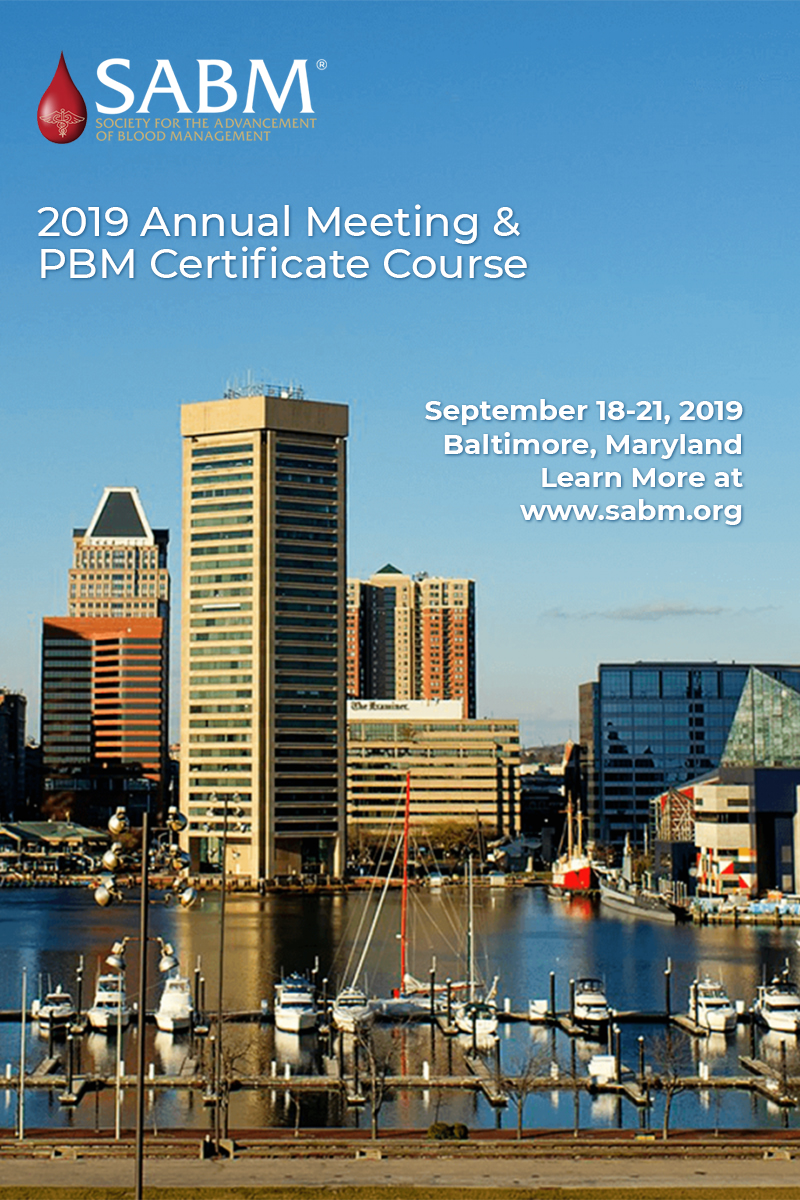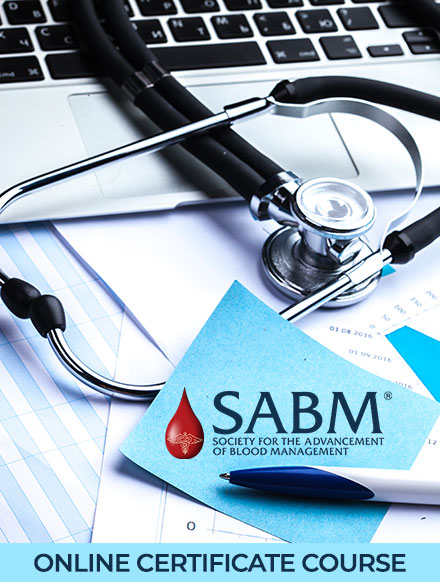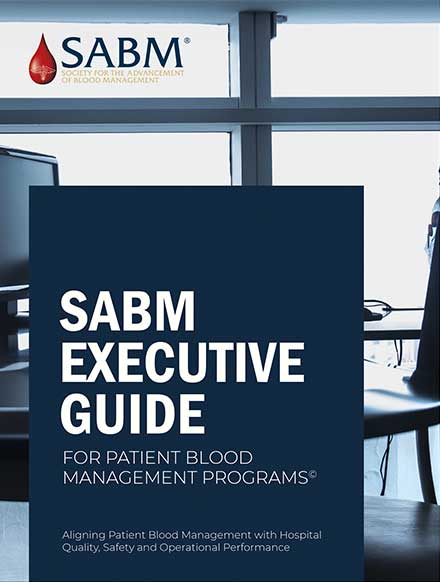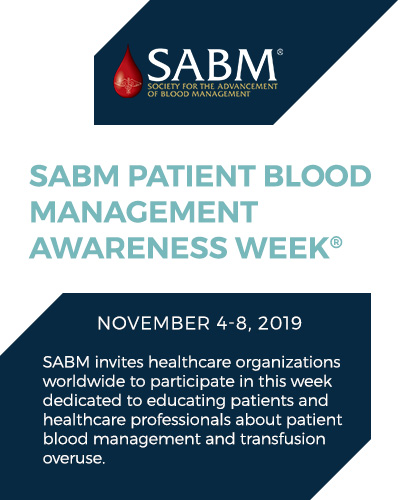JULY 2019
ISSUE

Early registration ends
August 2!
Please consider making a donation to your Society. Your donations will help us to improve the lives of people throughout the world through Patient Blood Management.
SABM 2019 Newsletter Publication Schedule
March | July | November
Editor: Carolyn Burns, MD
Associate Editor: Tiffany Hall, RN
Sherri Ozawa, RN
Kevin Wright
New Newsletter Team Members
Majed Refaai, MD
Christine Cahill, MS, BSN, RN
Mary Ann O'Brien, RN, MSN, CCRN, CNE
Contributors for This Issue
Ananthi Krishnamoorthy, MD
Robin Ortega, RN
Danielle Dropkin, BS
Allison Jones, PhD, RN
Marketing
Carmen Melseth
SABM Officers and
Directors
© 2019 Society for the Advancement of Blood Management
350 Engle Street Englewood, NJ 07631 USA Phone: (928) 551-6400 Fax: (877) 944-2272 EMAIL: [email protected] |
Standards Showcase
SABM Standard #10 - Massive Hemorrhage Protocol
There is a written protocol for transfusion management of patients with rapid large volume blood loss and hemodynamic instability.
Coagulopathies in patients who are hemorrhaging and receiving massive transfusions are likely to be multifactorial. Severe hemorrhage may result in hemodynamic instability, hypo-perfusion and anemia-related organ injury, leading to the decision for large volume transfusion. However, it is noteworthy that definitions for what constitutes massive transfusion vary.
An important role of the PBM program is implementing modalities that minimize allogeneic transfusion while optimizing tissue perfusion and hemoglobin values. Available evidence has shown that blood conservation strategies can minimize transfusion even in severely hemorrhaging patients. Recognizing that allogeneic transfusion is not an option for some patients, PBM initiatives should be actively pursued.
The first priority in the management of patients with massive blood loss is to stop the hemorrhage. Hospitals should have a protocol to assure hemostatic resuscitation at the same time. An interdisciplinary and collaborative team approach is most helpful in this scenario.
Indicator 10.4 states: “Administration of tranexamic acid is considered in all trauma patients with significant hemorrhage.” Early use of tranexamic acid in traumatic hemorrhage has been shown to reduce blood loss and decrease mortality. Use of factor concentrates such as activated recombinant Factor VII or prothrombin complex concentrates should be considered; fibrin sealants likewise have a proven efficacy.
Indicator 10.9 states: “Where available and clinically appropriate, peri-procedural autologous blood collection and administration is used to minimize the need for allogeneic red cells.” There are a variety of available surgical options utilized to minimize and avoid blood transfusion, accommodating patients that decline and/or wish to limit exposure to blood products, including (rapid) intraoperative also post-operative blood salvage.
Indicator 10.10 states: “There is a mechanism for multi-disciplinary quality review of complex cases involving massive hemorrhage and transfusion.” A careful review of such cases is vitally important leading to productive and at times novel approaches in limiting allogenic transfusion.
SABM’s evidenced-based Standards are a timely compilation of the most effective methods utilized in PBM. Clinicians and administrators alike are encouraged to consult these Standards continuously, for an urgent case can quickly become emergent.
Contributor: Kevin T. Wright
|




Consider submitting your future manuscripts in PBM for peer review and publication in this new section. The success of this endeavor will depend on the provision of material to make it lively and attractive to our colleagues and other professionals in the field.
Members Invited to Submit Papers CLICK HERE
|